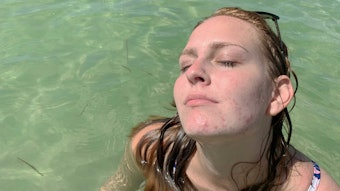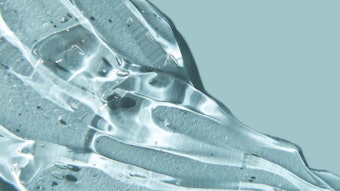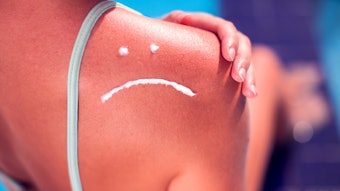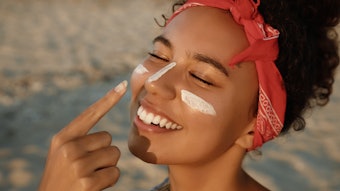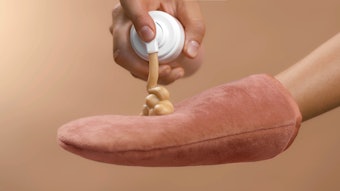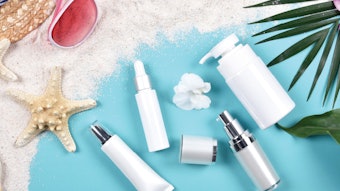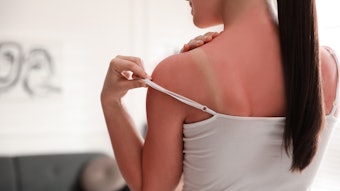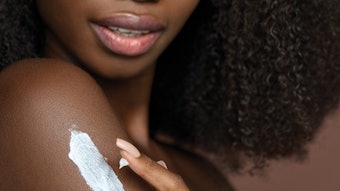
The lazy days of summer ... when everything seems to slow down, trips are planned, time is taken off work, and some well-deserved rest and relaxation is sought. However, for those in the professional skin care industry, it may be just the opposite, because business often picks up with more and more clients taking advantage of downtime to get corrective, rejuvenating treatments.
Although the timing for these types of treatments may prove ideal for clients, it may present some challenges for the skin. Administering peels and other corrective treatments during the summer months does require caution and awareness since skin becomes even more vulnerable to sun damage, heat and other elements.
This need not deter professionals from performing much-requested skin-changing services. With extra precautions and planning, you can bolster the protection of the skin and simultaneously reverse the effects of photoaging, supporting clients with their skin care goals. There are some very specific points skin care professionals must know about caring for the skin—both face and body—after peels and corrective treatments during the summer months.
Corrective cautions
When rendering peels, enzymes, microdermabrasion and other corrective treatments—whether on the body or face—during the warm, sunny season, there are a several important details to keep in mind.
- Clients must avoid exposure to the sun for at least two full weeks after a corrective treatment. Sun protection is essential, even if only exposed for short durations, including walks through the parking lot to the car. Never peel a client who has sunburned skin.
- Being outside, even in the shade, may have some adverse effects, as well. Excess heat will overstimulate the skin. Vigorous exercise in the days and weeks following a peel may also overstimulate, increasing the intensity of the peel.
- Although sunglasses and hats offer protection from the sun, those that press too heavily on the nose or across the forehead will create compression and irritation, causing wounds to appear.
- Swimming, even after dark, must be avoided for the first 48 hours after a corrective treatment, because the chlorine will irritate and dry the skin.
Although educating clients year-round about the importance of sun protection is a must, it becomes even more important during the summer months, particularly if a corrective treatment is performed. Beyond educating clients about the potentially harmful factors to avoid, it’s also your responsibility to provide the tools for maintaining healthy skin following a corrective treatment.
Compliant clients
Educating clients about potential summertime dangers is only half of the process. It is also important to ensure understanding and develop a plan.
- Recommend that clients schedule the treatment at a time when they can stay home for a week watching movies or catching up on their reading list. This goes into effect immediately after the peel is completed.
- Ask clients to bring a large-brimmed hat or provide a coat stand filled with “loaner” hats. Have them park near the front door or, if that is not possible, have their car brought to the door. You might also get the air conditioning going so the car is cool when they get in, because often, when a car door is opened in the heat of summer, it is like opening an oven.
- Provide clients with a bottle of water and encourage them to drink it all the way home. Finally, instruct them to go straight home, park in the garage, and avoid all heat and sun exposure.
If a client will not follow your instructions and guidance in this instance, you should not perform the service.
These precautions are not meant to discourage against summer treatments; instead, they are to serve as a reminder of potential complications in an effort to avoid damaging outcomes and undesirable results. With awareness, proper planning and creative summer-themed treatments, you can support clients in obtaining healthy, glowing skin.
Flavors of the season
Peels and enzymes are great for correcting skin issues, as well as nourishing the skin and helping it to defend against free radicals. (See Hibiscus and Vitamin A Peptide Summer Peel.) Capture the scents of the season by using ingredients such as the papain and bromelain to create tropical aromas. (See Sensational Summer Ingredients for additional ingredient ideas.) Along with delicious scents, treatments may also be adjusted for a more cooling summer experience. This is done by simply chilling topicals, masks and spritz formulas before applying them, or by gently rolling chilled ice globes over the skin. Microdermabrasion is another great option for a summer corrective treatment. This mechanical exfoliation lifts away dead skin cells and stimulates at the collagen level. It is a valuable summer service and works well in conjunction with low-strength enzymes and acids.
Although there are many choices, select enzymes and acids that support the correction and repair of the skin, but that are not contraindicative of the season. Generally selecting peels that are superficial and more progressive is a wise choice. Veteran clients who know the routine and what to expect may do well with more aggressive peels; but always use caution and adhere to the guidelines listed on the product.
Corrective body treatments
Because summer is, of course, prime swimsuit season, clients often seek solutions to get their bodies ready for the pool or beach. Fortunately, there are a number of tools at your disposal to help them get firm, toned and radiant skin beyond the face. The body ages just as the face does, and is subject to the same harmful environmental elements and agers. By treating the body with the high-quality actives used for facial rejuvenation, clients are able to achieve healthy skin all over.
Body peels work beyond the surface to reduce course texture and fine lines, diminish age spots and hyperpigmentation, and help maintain healthier, more youthful-looking skin. Peels are like a workout for the skin, and clients will notice an almost-immediate difference in overall tone and firmness.
With body peels there are different techniques and skin issues to be cognizant of before a treatment. Because the body has tougher skin, enzymes and alpha hydroxy acids (AHAs), such as L-lactic acids, work well to lift away deeper layers of dead skin cells, provide antioxidants, and regenerate and hydrate, leaving the skin smooth and polished.
For treating sun-damaged, photoaged, dry, sagging skin, consider starting with a lactic acid prep followed by a retinol-peeling agent with peptides to tone, firm and smooth the skin. For more aggressive treatments, most body peel treatments may also be coupled with microdermabrasion.
The same summertime guidelines will apply to body peels—remind clients to be more aware of sun and heat. They will also need to avoid swimming in chlorinated water in the first 48 hours following the peel treatment. Skin assessments are also essential, and paying attention to any existing scar tissue, sun damage, spots and moles is imperative. Never peel more than 25% of the body at the same time.
Summer home care systems
To ensure clients are maintaining the progress started in the treatment room, and to keep the skin supple, toned and glowing all summer long, be sure to send them home with a face or body care regimen from your retail area that can be used between treatments, as well as guidelines to help ensure compliance.
Summer is definitely the time to modify a client’s daily regimen. Reduce the strength of corrective topicals, include more serums that are formulated with skin-builders such as peptides, and increase humectant support with hyaluronic acid. Also increase topical antioxidants and advise clients to finish with an SPF before going out for the day.
Exfoliation.This is an essential component because it stimulates the skin and cell turnover, lifts dead cells and begins the regenerating process. Physical exfoliators scrub away dead skin cells, refresh and hydrate, while enzymatic and acid exfoliators blend fruit acids with vitamins and minerals to activate cell renewal and give skin an antioxidant boost. These can be used in tandem or on their own.
Nourishment. After the skin has been broken down following corrective treatments, it needs to be rebuilt with nourishing ingredients. Some of the most vital nutrients for healthy skin include peptides, essential fatty acids, growth factors and amino acids, to name a few. These supply energy to the cell, activate collagen production, detoxify skin tissues, hydrate, soothe and support the rejuvenation process.
Nutrients will also help counteract the effects of damaging free radicals. Boosting antioxidant, amino acid and essential fatty acid support through topical applications and proper nutrition will help clients keep photoaging at bay.
Antioxidants work to disable free radicals and prevent cell damage by inhibiting the oxidation of other molecules. An interesting fact, however, is that antioxidants are actually oxidized themselves, which is what enables them to effectively terminate oxidation chain reactions.
Topical formulas easily absorbed by the skin allow for the optimum delivery of antioxidants to the deeper skin cells to tone, firm and refine lines. Good home-care topical formulas might include:
- Vitamins A, C and E;
- Bioflavonoids;
- Polyphenols;
- Ascorbic acid;
- Tocopherols;
- Retinoids; and
- L-lactic acid.
Protection. Sun protection becomes even more vital following any corrective treatment when the skin is most vulnerable. Not all sun care formulas are created equal, however, and you will need to take into account the type of work you are doing and your client’s daily skin care regimen.
For instance, if a client is on vitamin A-derivatives, or other acid-based correctives and lighteners, or she is receiving skin-peeling treatments or microdermabrasion, consider the protection level, as well as how that sunscreen will interact with the disturbance to the skin, and exposure to sun and heat.
Hats, clothing and shade work well, but also remind clients to opt for an SPF of at least 30. Mineral-based sunscreens, such as those using zinc oxide or titanium dioxide, work well to protect against the full UV spectrum and are less likely to irritate the skin after the treatment. Look to formulas that also deliver antioxidants, because they will further support the fight against free radical damage. Some skin types can be sensitive to chemical-based sunscreens.
Zinc oxide plays an important role in cell production and healthy skin. This powerful mineral provides broad-spectrum protection, which in turn reduces UVA-induced free-radical production in the deeper layers of the skin. Also commonly used, titanium dioxide provides highly reflective properties. It is a nonirritating, nonallergenic and noncomedogenic mineral. It, too, is a physical blocker, offering both UVA and UVB protection.
Play it safe!
Seize the opportunities summer provides—clients with more downtime, corrective ingredients with tropical aromas and the rush for swimsuit-ready skin—and be sure you are prepared to fill the need with the proper tools, treatments and plans for post-care. Talk to clients about the effects of the sun and heat, and ensure they commit to a skin-nourishing and -protecting regimen to help clients achieve healthy, radiant skin all summer long.


